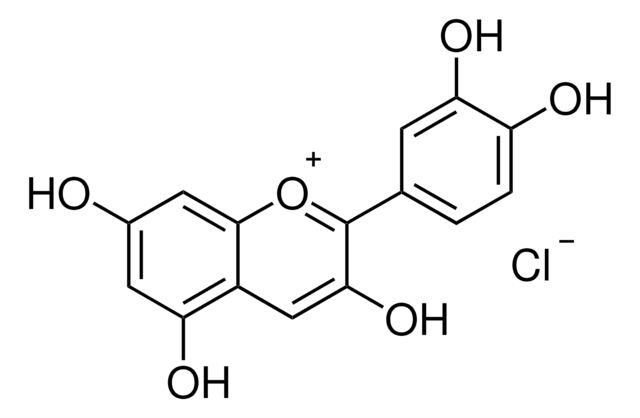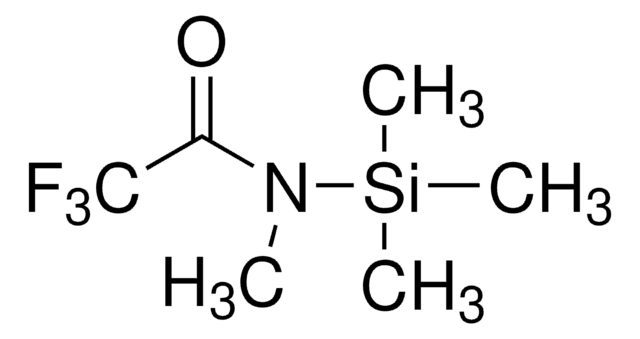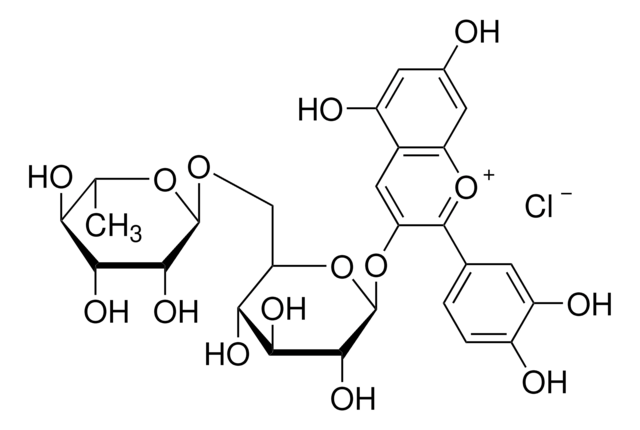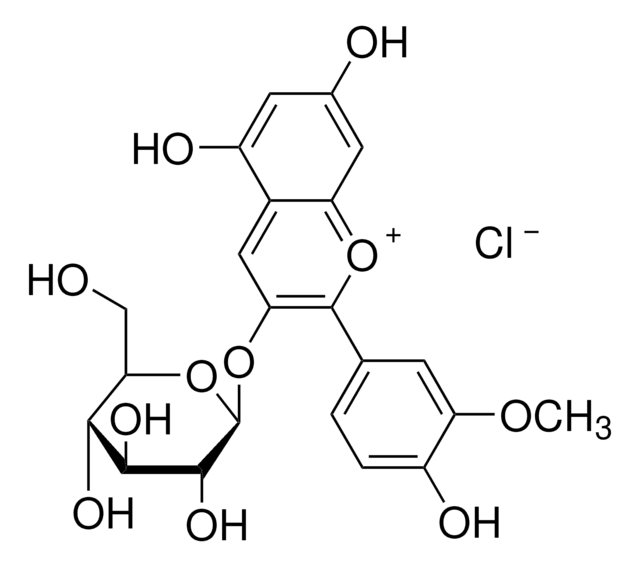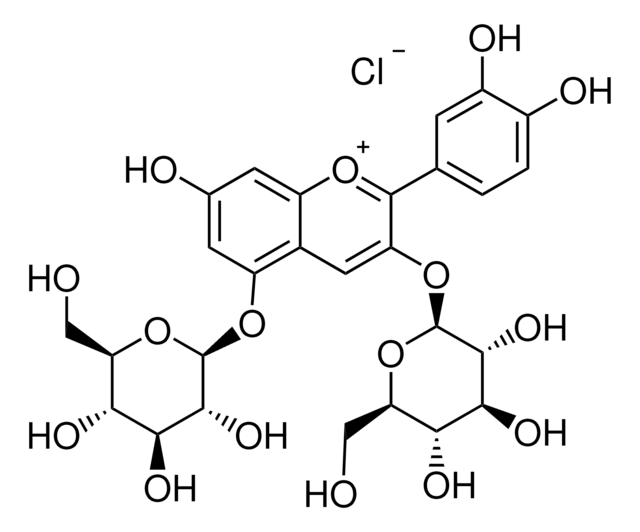Key Documents
44689
Kuromanin chloride
analytical standard
Synonim(y):
Asterin, Chrysanthemin, Cyanidin 3-O-glucoside chloride, Glucocyanidin chloride
About This Item
Polecane produkty
klasa czystości
analytical standard
Poziom jakości
Próba
≥98.0% (HPLC)
okres trwałości
limited shelf life, expiry date on the label
metody
HPLC: suitable
gas chromatography (GC): suitable
zanieczyszczenia
≤10.0% water
Zastosowanie
food and beverages
format
neat
Warunki transportu
wet ice
temp. przechowywania
−20°C
ciąg SMILES
O[C@@H]1[C@@H](O)[C@H](OC2=CC3=C([O+]=C2C4=CC(O)=C(O)C=C4)C=C(O)C=C3O)O[C@H](CO)[C@H]1O.[Cl-]
InChI
1S/C21H20O11.ClH/c22-7-16-17(27)18(28)19(29)21(32-16)31-15-6-10-12(25)4-9(23)5-14(10)30-20(15)8-1-2-11(24)13(26)3-8;/h1-6,16-19,21-22,27-29H,7H2,(H3-,23,24,25,26);1H/t16-,17-,18+,19-,21-;/m1./s1
Klucz InChI
YTMNONATNXDQJF-UBNZBFALSA-N
Szukasz podobnych produktów? Odwiedź Przewodnik dotyczący porównywania produktów
Zastosowanie
Działania biochem./fizjol.
Opakowanie
Kod klasy składowania
11 - Combustible Solids
Klasa zagrożenia wodnego (WGK)
WGK 3
Temperatura zapłonu (°F)
Not applicable
Temperatura zapłonu (°C)
Not applicable
Wybierz jedną z najnowszych wersji:
Masz już ten produkt?
Dokumenty związane z niedawno zakupionymi produktami zostały zamieszczone w Bibliotece dokumentów.
Klienci oglądali również te produkty
Nasz zespół naukowców ma doświadczenie we wszystkich obszarach badań, w tym w naukach przyrodniczych, materiałoznawstwie, syntezie chemicznej, chromatografii, analityce i wielu innych dziedzinach.
Skontaktuj się z zespołem ds. pomocy technicznej
